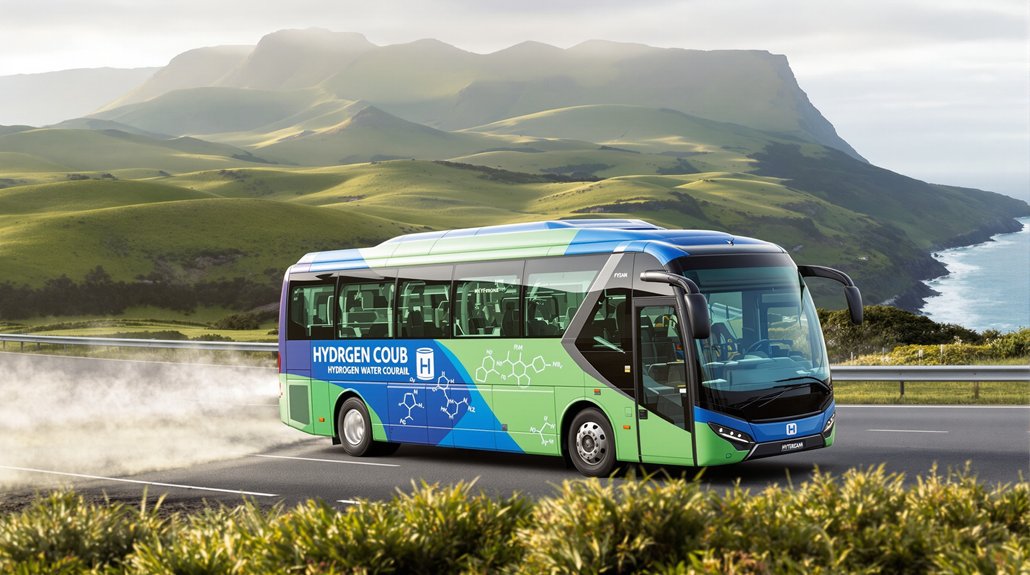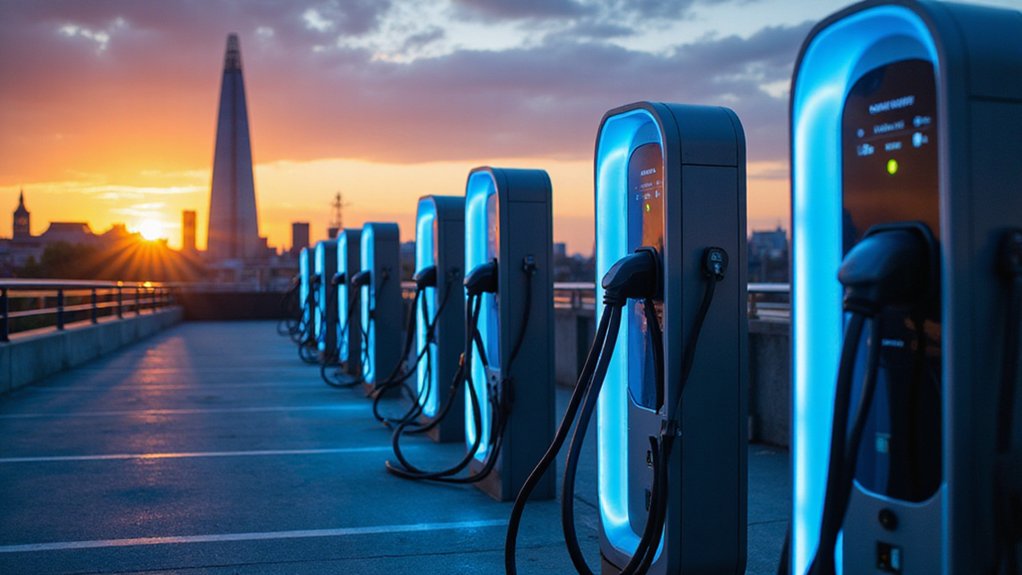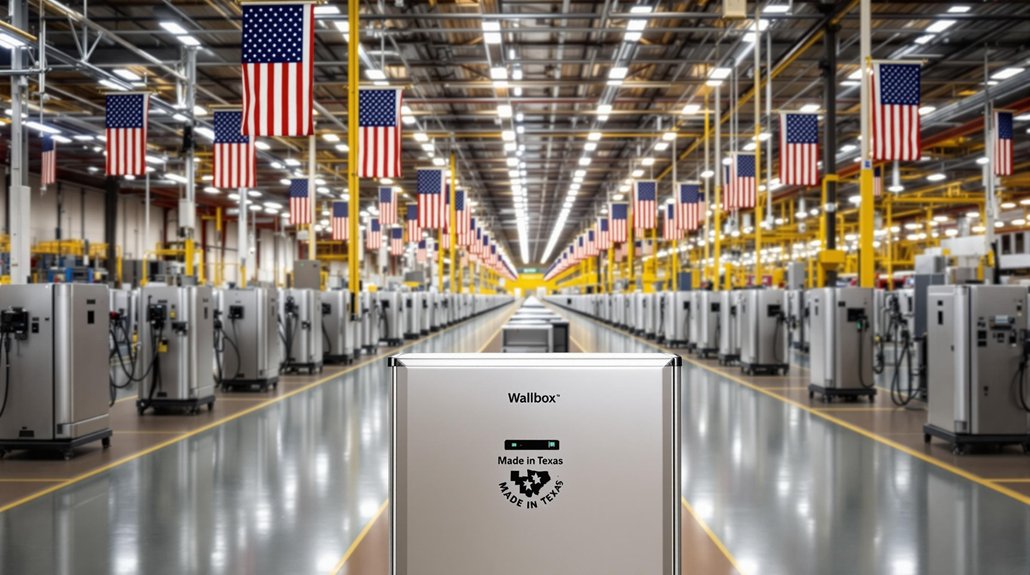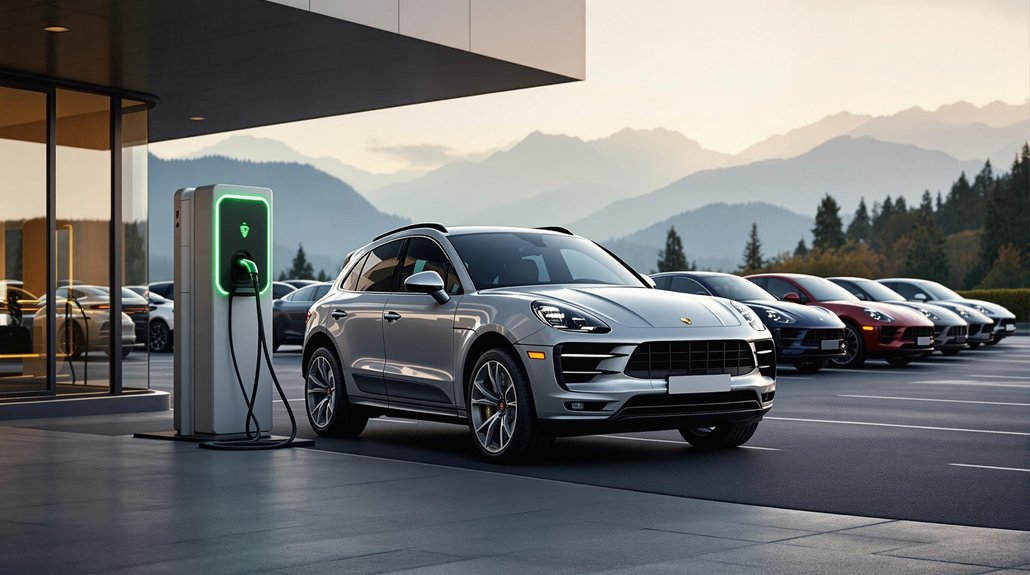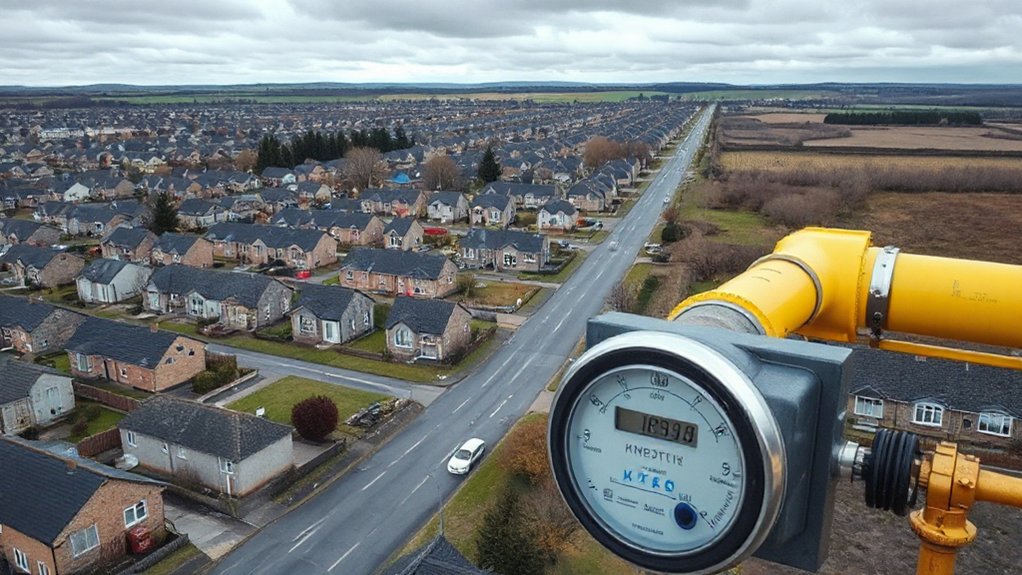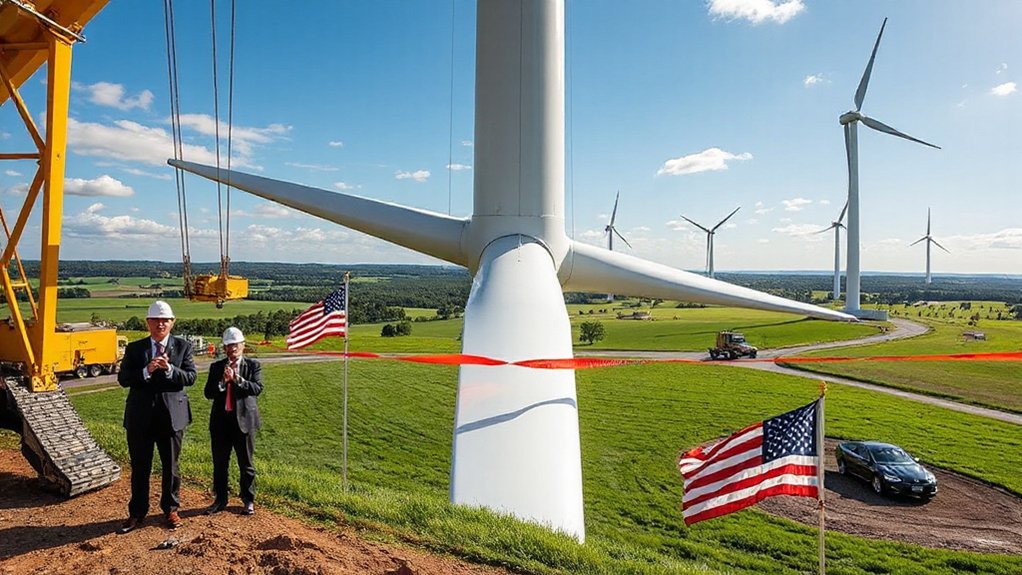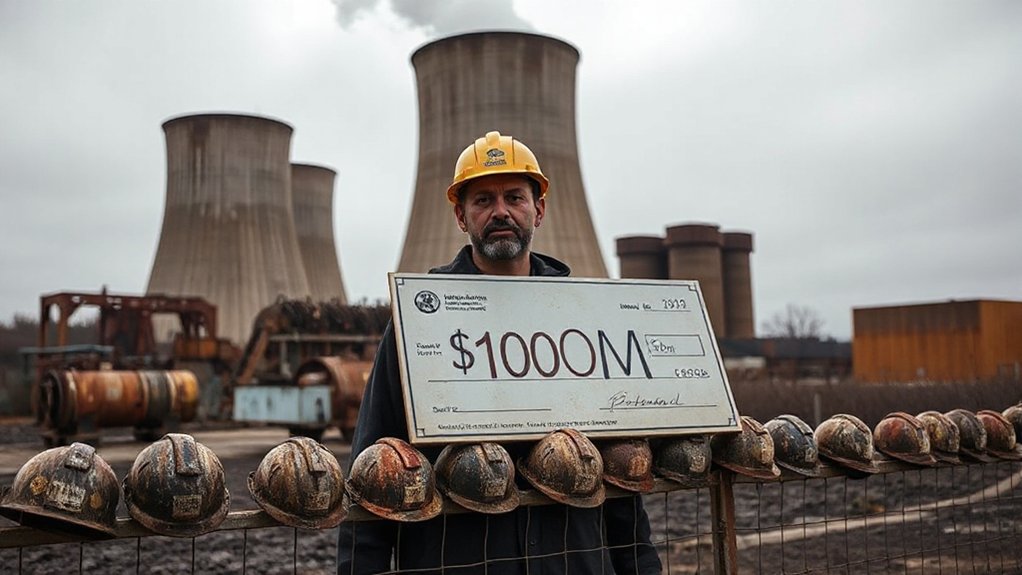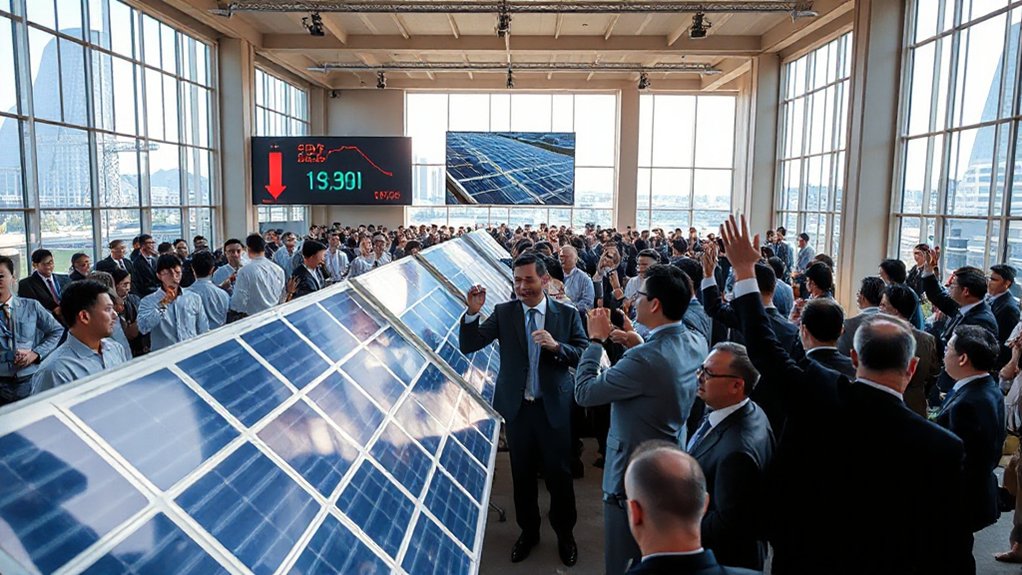The future has arrived in Hobart. Three hydrogen electric buses are now cruising the streets, emitting nothing but water vapor. Let that sink in. Public transportation that doesn’t choke pedestrians with diesel fumes. Transformative stuff, really.
Hobart’s streets now breathe easier, with zero-emission buses leaving behind only water where diesel fumes once lingered.
These buses are part of Tasmania’s Zero Emission Bus trial, a two-year experiment testing how hydrogen fuel cell technology performs in the island’s unique climate and terrain. They’re not your average buses. Electric motors powered by batteries that get charged by on-board hydrogen fuel cells. Science fiction made real.
The whole operation is impressively local. Buses refuel at Metro Tasmania‘s dedicated station in Mornington. And the hydrogen? It’s green. Produced right there using a 700 kW PEM electrolyser running on Tasmania’s abundant renewable energy. Up to 262 kg daily. Enough to keep these water-emitting machines on the road.
Metro Tasmania isn’t doing this alone. They’ve got partners. The Tasmanian Government, Renewables, Climate and Future Industries Tasmania, Department of State Growth. Foton Mobility Distribution supplied the buses. H2H Energy handled the refuelling tech. Even the Blue Economy CRC got involved with the electrolyser.
It’s quiet on these buses. No rumbling engine. No black smoke. Just the whisper of electric motors and the knowledge that your commute isn’t killing the planet. Similar initiatives are gaining momentum globally, with Hyundai completing trials in Saudi Arabia and hydrogen buses appearing in cities from Vienna to India. These buses utilize regenerative braking technology to capture energy during stops, further increasing their efficiency. This innovation aligns with the global trend that saw battery storage capacity nearly double in recent years to address intermittency concerns in renewable energy systems. Riders get to experience the future of transit while running everyday errands. Tourists probably think Tasmania is decades ahead of wherever they came from.
The trial is creating jobs too. People running the buses, maintaining infrastructure, producing hydrogen. All part of Tasmania’s emerging hydrogen economy. Not bad for a small island.
Will this experiment lead to more zero-emission buses across Tasmania? Probably. The data collected will guide future decisions. For now, though, Hobart residents can enjoy their water-producing buses. Clean transportation isn’t just possible—it’s already here, chugging down Tasmanian streets.
References
- https://bus-news.com/tasmania-hydrogen-electric-buses-start-service-in-hobart/
- https://www.hydrogenfuelnews.com/green-hydrogen-buses-hit-hobart-streets-tasmanias-zero-emission-bus-trial/8572531/
- https://www.globalhydrogenreview.com/hydrogen/18082025/metro-celebrates-hydrogen-buses/
- https://hydrogeneurope.eu/hydrogen-buses-hit-the-road-in-tasmania-with-local-refuelling-tech/
- https://www.travelandtourworld.com/news/article/tourists-in-tasmania-can-now-enjoy-sustainable-travel-on-hydrogen-electric-buses/
